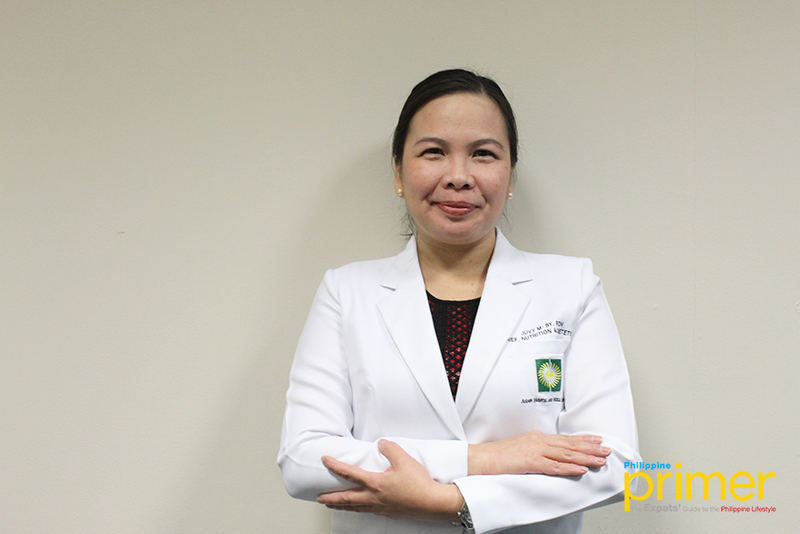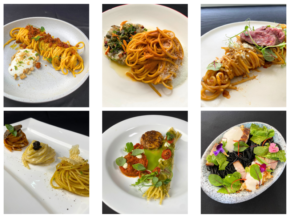Diet Trends in the PH You Should Know About
January marks a busy month for gyms and diet deliveries as everyone is itching to get rid of their holiday bellies. You’re also likely to be Googling for different types of diet that could help you attain your fitness goals.
With left and right diet trends, it’s hard to know for sure which one is actually effective for you. There are fad diets that may do more harm than good, so at the end of the day, it’s still better to consult an expert.
So join us as Asian Hospital and Medical Center’s Chief Nutritionist Dietitian Juvy C. Martillos-Sy, RND, RDN discusses and debunks the following diets: Vegan, Vegetarian, Intermittent Fasting, Paleo, and Ketogenic.

We have listed five diet trends in the Philippines, namely Vegan, Vegetarian, Intermittent Fasting, Paleo, and Ketogenic Diet. What can you say about these diet trends?
Vegan/Vegetarian
Vegans exclude eggs and dairy products and may exclude honey. Meanwhile, a Vegetarian may or may not include egg or dairy products. The other types of vegetarian diets are lacto-vegetarian (includes dairy products but not egg products), ovo-vegetarian (includes eggs and egg products, but no dairy), and lacto-ovo vegetarian (includes eggs and dairy products). When planned appropriately, a vegan or vegetarian diet can help lower the risk of diseases like cancer, pre-diabetes, hyperlipidemia, hypertension, overweight, and obesity.
Intermittent Fasting
Intermittent fasting is a broad term with a variety of programs that modify the schedule of eating occasions. There are three types: alternate-day fasting, whole-day fasting, and time-restricted fasting. The idea with intermittent fasting is to plan limited hours for your daily meals or to have a very limited amount of calories. One example is having an estimated 25 percent of the total energy needs for two days and can eat anything you like for five days. Research on time-restricted feeding is limited and specific recommendations cannot be made at present.
Paleo Diet
Paleo diet promotes the avoidance of modern food like extra refined sugar and processed energy-dense food. This also includes eating basic food that our ancestors ate during the Paleolithic era such as meat, fish, nuts, and fruits. Further randomized controlled studies with more subjects and for a longer period of time are required to determine whether it has any beneficial effect over other dietary advice.
Ketogenic Diet
According to evidence-based Clinical Nutrition practice guidelines, a ketogenic diet is recommended only for children diagnosed with seizures. This type of diet consists of very high fat and low carbohydrate food. This needs collaborative approach of medical management, which consists of a Neurologist, a Registered Nutritionist-Dietitian, and a Registered Nurse.
Do you have additional insights about these diet trends?
Here in Asian Hospital and Medical Center, we offer the Mediterranean diet because it is supported by scientific studies and is usually recommended for adults and older people for improving brain memory. Healthy monounsaturated fats are usually consumed in this type of diet, and they come from food rich in omega 3 fatty acids, including salmon, olives, nuts, and more.
Which type of diet do you follow?
I follow a liberal diet because you can eat anything as long as it’s portioned. You have food variations, and you are willing to compromise based on your lifestyle. It’s just a matter of discipline on how you choose your meals.
What’s your advice on how to choose the proper diet plan?
I strongly recommend visiting a registered nutritionist-dietitian. In your visit, we can provide an individualized diet plan. This will be according to your age, height, lifestyle, food preference, recent metabolic panel, laboratory results, and physical activities. But if you don’t have time or resources, you can check Pinggang Pinoy online, a visual food guide by the Food and Nutrition Research Institute (FNRI), where a balanced portion of protein, carbohydrates, fats, vitamins, and minerals can be seen according to your specific age group. You can also follow the inverted pyramid, where you eat a high volume of food in the morning because you can burn it the whole day, and then eat less amount at night.
This first appeared in Philippine Primer English Magazine’s January 2019 issue.













